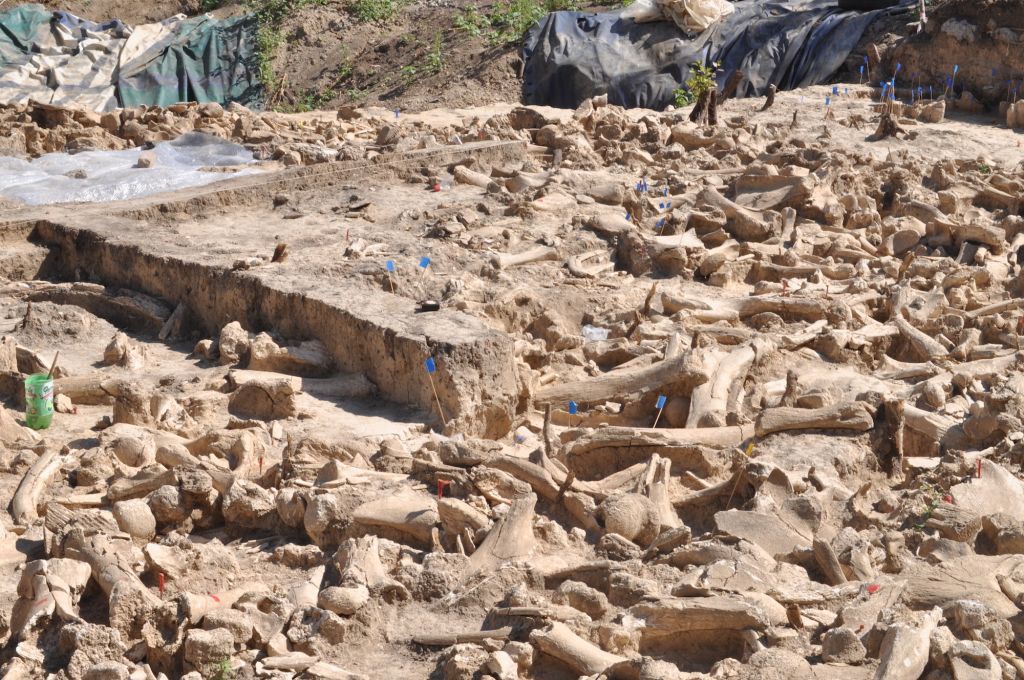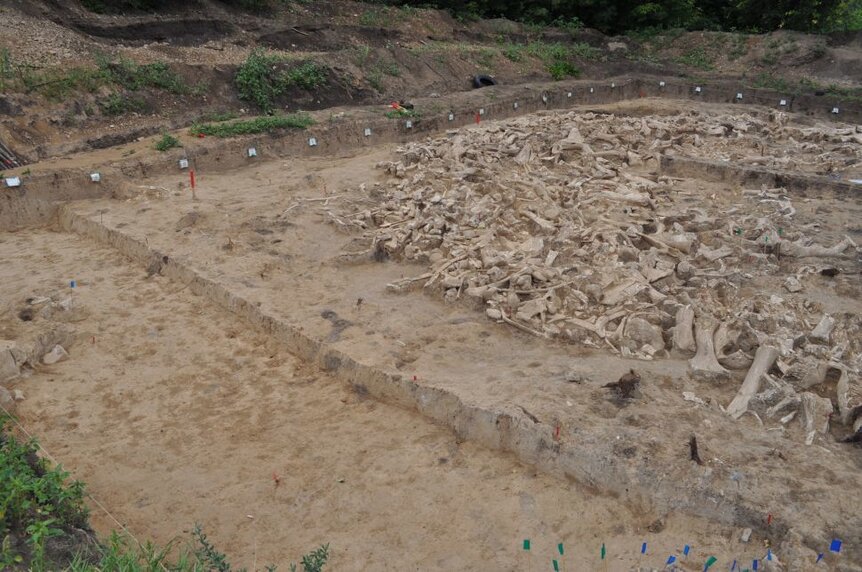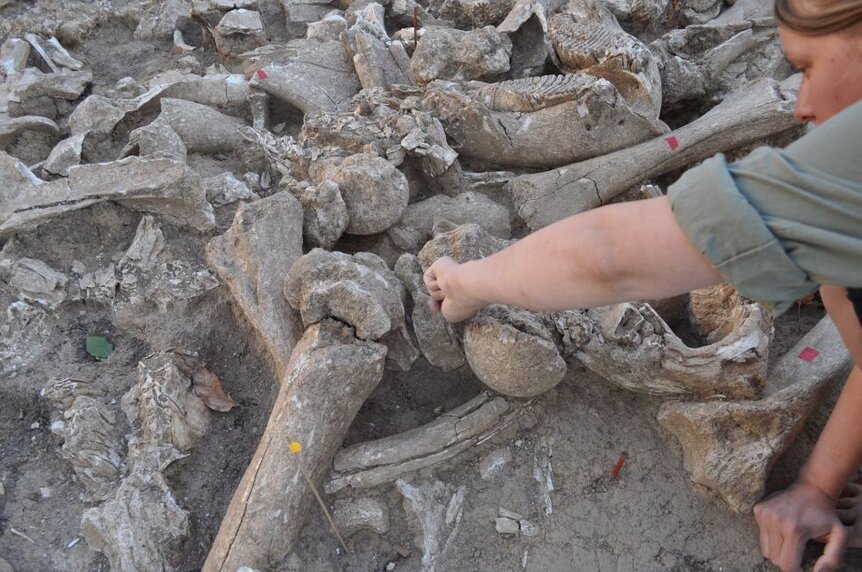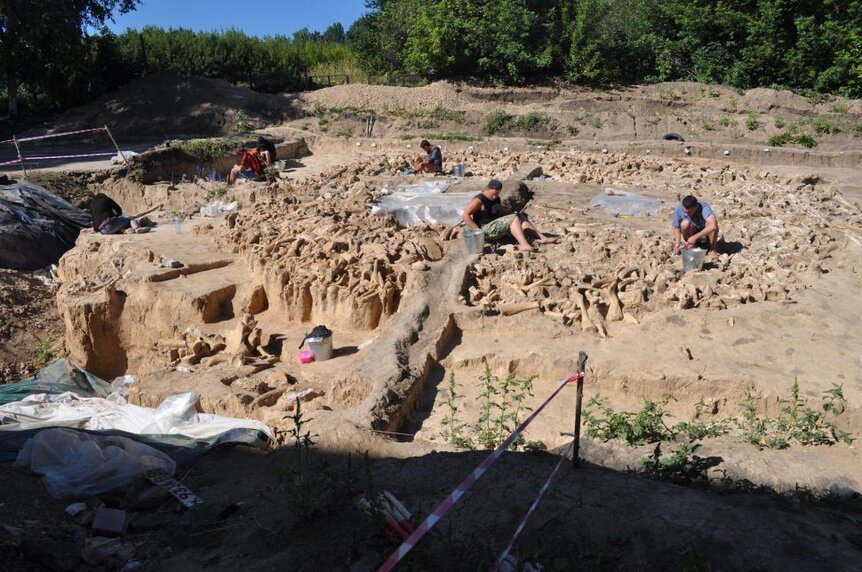Create a free profile to get unlimited access to exclusive videos, sweepstakes, and more!
Russian archaeologists discover an ancient home built of Ice Age animal bones

The Three Little Pigs, those architecturally-gifted swine of nursery rhyme fame, crafted their individual houses out of straw, sticks, or bricks... but luckily none of them had the bizarre notion or inclination to build a domicile out of dead animal bones.
Russian scientists recently made a gruesome discovery during an archaeological excavation when they found the circular remnants of a large shelter or enclosure made by Paleolithic people using the bones of Ice Age animals that roamed the region over 20,000 year ago. Like something straight out of a Texas Chainsaw Massacre movie, this "house" was originally erected with the bleached remains of more than five dozen mammoths, along with bones and joints from reindeer, bears, horses, Arctic foxes, and wolves.
The new study published in the Cambridge University Press' online journal Antiquities explains that this location was possibly used as a hunting shelter, ritualistic/ceremonial site, food storage warehouse, or a cozy respite from the bone-gnawing, frigid winters of the latter part of the last Ice Age. Bone circles of this nature are not uncommon in the remote region, and approximately 70 others exist at 25 locations across the Ukraine and Russia, however, this particular dwelling is the oldest ever unearthed on the Russian Plain.
"It is made up of thousands of bones that come from at least 60 different woolly mammoths," study lead researcher Alexander Pryor, a lecturer of prehistoric archaeology at the University of Exeter in England, told Live Science. "All parts of the mammoth bodies are represented, from very large bones like skulls and leg bones to smaller bones like vertebrae."
The odd relics, arranged in a scattered 36-foot diameter circle, were first located by study co-researcher Alexander Dudin, director of the Kostenki Museum-Preserve in Voronezh, Russia, who was involved in survey work 350 miles south of Moscow at the archaeological site of Kostenki 11. Strange as they may seem to modern man and his more civilized building materials, these macabre bone pilings in Upper Palaeolithic Eastern Europe are widely identified by the scientific community as dwellings.
By analyzing debris collected inside the bone-piled enclosure and three pits dug outside, researchers counted some 300 small stone and flint chips, the biproduct of using special knapped rocks for killing prey and scraping flesh off animal hides. Aside from piles of burnt bones, charred seeds were also recovered, suggesting what these ancient peoples might have eaten for sustenance in a hostile climate.
"This is a story about our human ancestors innovating to survive the coldest point of the last ice age and using all resources and materials that they had," Pryor said. "It would have been a challenging place to live, but they were making a success out of it."





























